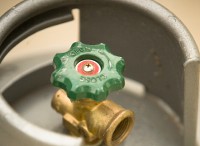MESSAGE-Access
About MESSAGE-Access
“MESSAGE-Access” describes a residential energy and technology choice model, which interacts with the global energy system model, MESSAGE. It is used to assess pathways to achieve universal access to modern energy by 2030 by accelerating the transition to clean cooking fuels and electrification in the regions of South Asia, Pacific Asia, Central America, and sub-Saharan Africa.
MESSAGE-Access provides a strong modeling framework for analyzing effective policy choices to improve the penetration of modern cooking fuels among the poor and electrifying rural areas. It is the first model to explicitly account for heterogeneous economic conditions and the preferred energy choices of poor populations living in rural and urban settings.
FAST FACTS
MESSAGE-Access is implemented for the regions of South Asia, Pacific Asia, Central America, and sub-Saharan Africa.
The model is the first to take into account the heterogeneity in energy choices by grouping people according to their income level and separately for urban and rural areas.
Model results show achieving universal access to modern energy for cooking and eliminating use of traditional biomass could potentially save over a million lives each year until 2030 by avoiding deaths caused by solid fuel use.
Model results show the need for both credit access (micro-financing) and fuel price support (subsidies) to achieve universal access to modern forms of energy by 2030.>
The MESSAGE-Access Model is based on data from nationally representative consumer surveys. This data is used to calibrate the model in the base year to represent the existing patterns of energy use in households distinguished by their place of residence and income level.
A basic micro-economic choice and demand model serves as the backbone of the new model. Demand curves are used to estimate how each household group’s energy and technology preferences vary with the total cost of satisfying a particular service demand.
The choice model is embedded within the overall IIASA MESSAGE model - a global-scale, multi-region, energy system model. The linkage with the larger MESSAGE energy system model allows for residential energy use to be influenced by macro feedbacks from the larger energy system, particularly via energy prices.
Background
Past attempts to develop models of improving access to clean energy for cooking and electricity have failed to take account of consumer preferences. MESSAGE-Access acknowledges that different consumer groups have different preference for stoves and fuels, based on convenience and constraints such as costs and credit availability.
The collection and burning of woody biomass to cook food has consequences on many levels. It traps women (in particular) in poverty as they must devote much of their time to wood collection. It affects the environment and climate due to deforestation and the emission of black carbon and greenhouse gases that result from burning, and tragically it is costing the lives of many woman and children in the developing world, predominantly in India, sub-Saharan African nations, and China.
As of 2011, about 20% of the world’s population still lives without electric lighting, and the number of people without access to electricity is on the rise in sub-Saharan Africa. Many income-generating activities require access to electricity, and adequate lighting can hardly be supplied by alternative fuels such as kerosene. Using kerosene for lighting also has negative health impacts at the household level.
Challenges
The main challenges for the adoption of modern fuels, like LPG, are the high up-front investment cost and credit constraints that affect consumers' energy-related decisions. Subsidies alone are inefficient for promoting modern fuels, as they do not affect the steep up-front investment costs. Improved financing opportunities for the appliance investment would ease the burden of purchasing modern stoves, but high fuel cost could still constrain populations from adopting cleaner-combusting fuels. Combining both policies is the most effective in facilitating the switch to modern fuels (LPG in the model), by all households.
Effective methods for electrification depend highly on future electricity demands and geographical location of settlements. New technologies such as off-grid technology or decentralized distributed generation (DDG) could play an important role, particularly in the early stage of development when demands are low, but grid electricity could become more viable under higher demands in the future. Identifying key factors that determine the least cost way to achieve universal electrification under different development pathways is crucial to directing investments most effectively.
CONTACT DETAILS
Senior Research Scholar Transformative Institutional and Social Solutions Research Group - Energy, Climate, and Environment Program
Research Group Leader and Principal Research Scholar Transformative Institutional and Social Solutions Research Group - Energy, Climate, and Environment Program
Principal Research Scholar Sustainable Service Systems Research Group - Energy, Climate, and Environment Program
Principal Research Scholar Integrated Assessment and Climate Change Research Group - Energy, Climate, and Environment Program


